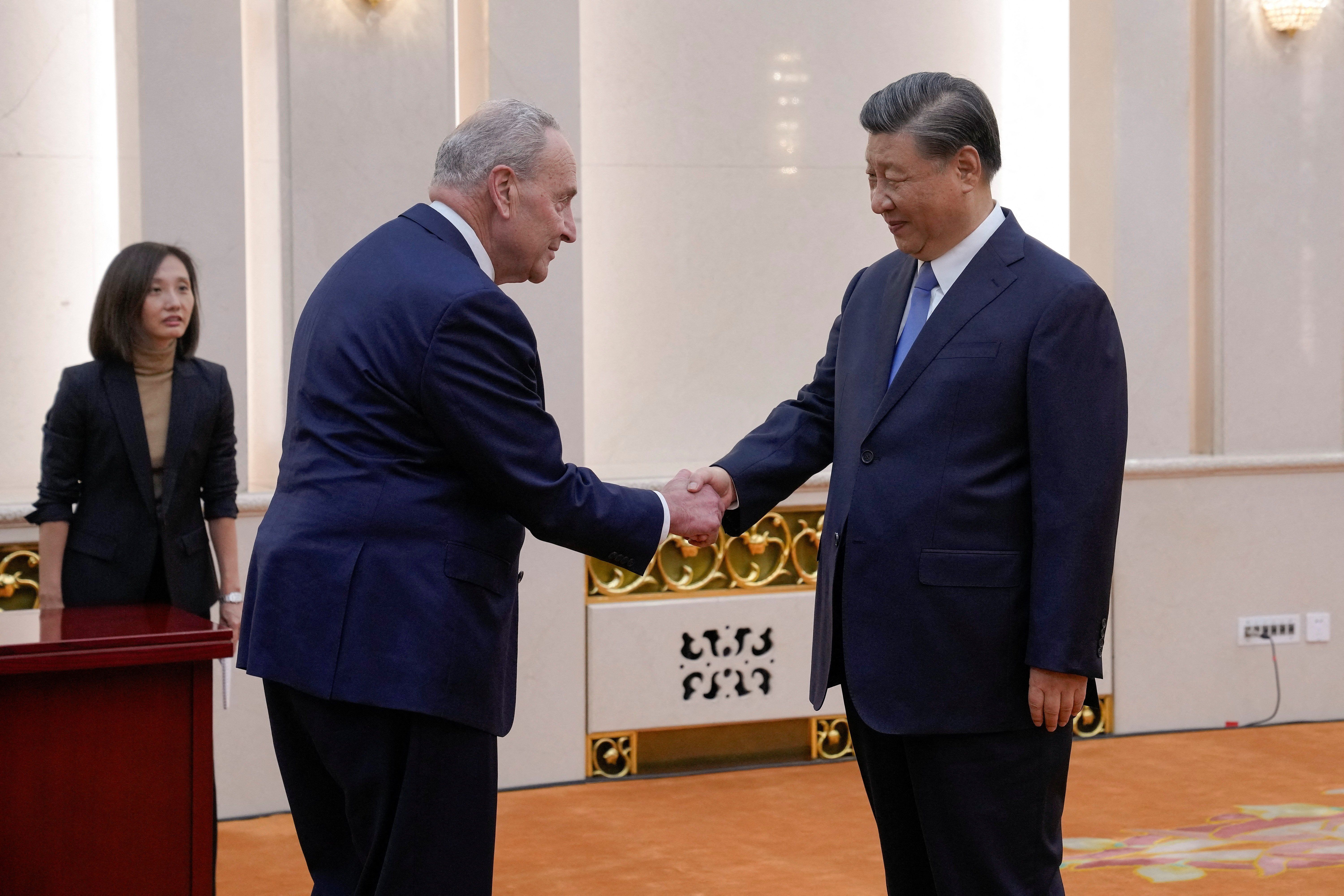Chinese President Xi Jinping met with a bipartisan group of US lawmakers in Beijing Tuesday, the latest in a series of bilateral meetings that appear to be the runway to a Biden-Xi summit next month.
The visiting group includes notable China hawks like Senate Majority Leader Chuck Schumer (D-NY) and Sen. Bill Cassidy (R-LA).
At a time when President Joe Biden’s recent attempts to stabilize things with China have gotten a cool response on Capitol Hill, that’s significant, says Anna Ashton, an expert on US-China relations at Eurasia Group.
“It does look like Congress saying, ‘OK, there's something to this, scaling up diplomatic engagement for managing the relationship and ensuring stability,’” she says.
But just as important, according to Ashton, was Xi’s decision to meet with lawmakers directly, spending much longer with them than he had with Secretary of State Antony Blinken in June.
“It’s a clear signal that this effort at détente is important to Beijing and specifically to Xi Jinping himself,” she adds.
Biden-Xi meeting on the cards. If all goes well, the leaders of the world’s two largest economies will meet during the Asia-Pacific Economic Cooperation Summit in San Francisco in November.
Alongside economic and trade issues, Taiwan will loom large: The self-governing island, which China claims as its own, holds elections in January in which China is
trying to nudge things towards a candidate who favors closer ties with Beijing.
